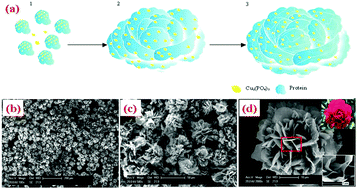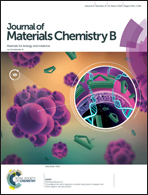Recent advances in biomolecule immobilization based on self-assembly: organic–inorganic hybrid nanoflowers and metal–organic frameworks as novel substrates
Abstract
In the past few years, the immobilization of biomolecules on hybrid nanoflowers and metal–organic frameworks (MOFs) via self-assembly synthesis has received much attention due to its simplicity, high efficiency, and a bright prospect of enhancing the stability, activity and even selectivity of biomolecules compared to conventional immobilization methods. In the synthesis of organic–inorganic hybrid nanoflowers, biomolecules used as organic components are simply mixed with metal ions which act as inorganic components to form flower-like nanocomposites, while in the self-assembly process of encapsulating biomolecules in MOFs (biomolecule@MOF composites), the biomolecules just need to be added to the precursor mixtures of MOFs, in which the biomolecules are therefore embedded in MOF crystals with small pores. In this review, we focus on the recent advances of these composites, especially in the synthesis strategies, mechanism and applications in biosensors, biomedicine, pollutant disposal, and industrial biocatalysis, and future perspectives are discussed as well.

- This article is part of the themed collection: Recent Review Articles


 Please wait while we load your content...
Please wait while we load your content...